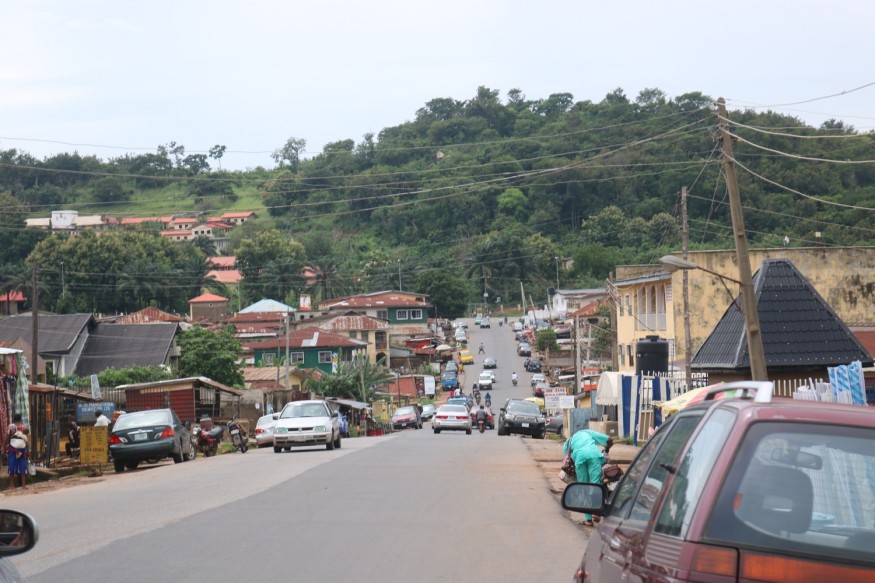Frederick Chukwuemeze spent five years in Anka, a mining town in north-west Nigeria, treating children poisoned by lead.

Deaths and Illnesses
More than 600 children have died in Zamfara state due to lead poisoning since 2010. Hundreds more have suffered brain damage and physical impairments due to dangerous artisanal gold mining.
He's seen people with uncontrollable seizures who could not be treated with medicines. Children that are unable to speak are unable to walk. They are always in bed, unsure of where they are. Then there are the deaths of children. When we witness such occurrences, it's quite distressing, said Chukwuemeze.
No Deaths for Months
Since October of last year, however, no kid has died under his watch, owing to a collaborative effort involving local and international institutions that has nearly eliminated lead poisoning cases in the state.
Chukwuemeze, who works with Médecins Sans Frontières (MSF), part of the clean-up operation, described it as a "great accomplishment" for both the patients and himself.
Lead Poisoning Communities
An epidemic of lead poisoning in at least seven communities in Zamfara in 2010 prompted the massive endeavor. In a disaster that sent shockwaves across the country and brought the perils of mineral mining in a primarily destitute and rural area into sharp light, 400 children died for six months.
More fatalities and hundreds more poisoning instances have occurred in the subsequent years, including children who have suffered brain damage and physical impairments.
At the height of the crisis, 120 children perished in Dareta village, according to Alhaji Muhammadu Bello, the community's chief. Every day, six or seven people died.
Also Read : Russia Accused Ukraine of Biological Warfare After Allegedly Discovering 30 Biological Labs
Tracing Back the Poisonings
The poisoning was traced back to processing gold reserves in village dwellings and residential areas, which contaminated the soil, water, and food.
Many people in Zamfara, a mineral-rich state, rely on artisanal - small-scale - mining for a living, and many youngsters out of school are involved.
MSF teamed up with OK International, an occupational and industrial health organization, and TerraGraphics International Foundation, an environmental engineering organization, to work with Zamfara state health, environmental, and other government officials to develop a long-term plan to reduce lead poisoning. Their mission was made more difficult because settlements were sometimes overtaken by militants and were inaccessible to relief.
More than 8,000 children in impacted mining areas have been tested by MSF and state health officials. After an intense monitoring program, more than 3,500 have had extensive chelation therapy to eliminate lead deposits from their blood.
More than 5,000 miners and community workers have been taught enhanced lead-safety standards. Specialized processing sites - complete with showers - have been established 2 to 3 miles away from residential areas to prevent miners from transporting mineral deposits home.
As a result, no children have died due to lead poisoning this year, and cases are becoming increasingly rare.
Helping the People
According to Benjamin Mwangombe, MSF's project coordinator in Zamfara, "each village head and council leader should guarantee that people are not transporting mining processing home but processing in specified locations for each village."
Efforts
According to Alhaji Shehu Anka, the chairman of Zamfara state's environmental sanitation department, excavation efforts eliminated debris from soil and mineral processing left in wells and ponds.
Because the mining activities had severely harmed the local ecology, he explained, they needed to make a considerable effort to rehabilitate it and make it safe.
Due to security concerns, they undertook part of the environmental work and environmental training remotely. We used to invite miners from such communities to join us. He went on to say that they would take soil samples from the houses of children who were not responding to treatment and then fix the environment themselves.
Success
Mwangombe credited the project's success to the community's and local and state authorities' involvement, which he said was now being handed over to the Zamfara state government.
They realized the epidemic occurred due to people bringing mineral processing to the communities. People have no idea how to mine safely. He stated that they now feel there has been a good amount of behavioral change.
Related Article : UK Lifts Ban on Pesticides that Harms Bees Despite Scientific Advices
For similar news, don't forget to follow Nature World News!
© 2025 NatureWorldNews.com All rights reserved. Do not reproduce without permission.





